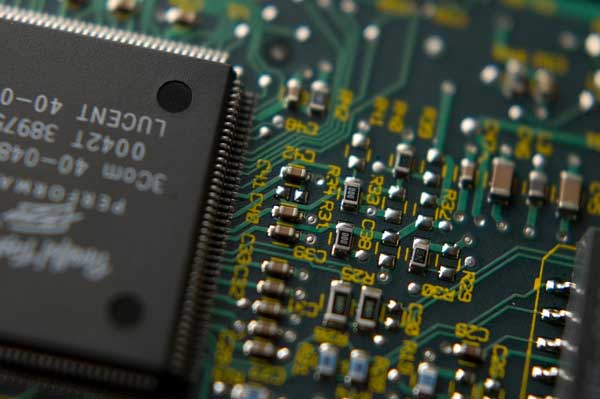DeepSeek scare is yet another example how AI technology affects chipmakers

[photo of semiconductor, Photo Credit to Pixabay]
As Nvidia, a major U.S. chip designer, recently experienced record-high stock market losses following the release of DeepSeek, a Chinese chatbot, Dr. Kim, a science director at one of the world’s top semiconductor companies, explains that it is only one example of how AI technology is shaping the future of the chipmaking industry.
On January 27, 2025, Nvidia- the leading designing house for graphic processing unit(GPU) chips- saw its share price plummet by 17 percent wiping nearly 600 billion US dollars off its market capitalization, which represents the total value of a public company’s stock held by all its shareholders.
Financial analysts attribute Nvidia’s stock crash to investor concerns that Nvidia’s chips would decrease in sales as the Chinese startup DeepSeek claimed that it used cheaper chips and less data to build a cost-effective AI model.
According to Dr. Kim, however, this development comes as no surprise, as advancements in AI technology have repeatedly sent shockwaves to the chipmaker industry.
“Chipmakers have been traditionally focused on developing and producing central processing unit(CPU) chips which act as the brain of the computer system by interpreting data and executing instructions,” Dr. Kim explained.
“In November 2022, OpenAI, a US AI research company, brought about a drastic change on such a scene when it launched ChatGPT, based on generative AI,” he continued.
Dr. Kim further added, “Generative AI is a subset of AI, focused on creating contents by using deep-learning models, trained on vast amounts of data to discern patterns while ChatGPT is a form of generative AI that generates human-like text or speech.”.
He noted that, “the growing popularity of ChatGPT abruptly thrust Nvidia, which was founded back in 1993, to the fore of the world’s chip sector because its GPUs, initially designed for digital imaging processing and associated with video and computer games, worked faster than CPUs, although not finer.”.
“You see, ChatGPT needs to concurrently process massive amounts of data for being trained on data before being able to generate responses. The key to its success is chips that work faster but not necessarily finer,” Dr. Kim noted.
To illustrate this, he elaborated on an example, “If the GPU is a full class of high school students carrying out simple mathematical computations, the CPU is a single scholar with a PhD in mathematics, tackling a complicated mathematical question for NASA.”.
“The increased market demand for GPUs in turn has led to the need for higher volumes of high-bandwidth memory(HBM) chips which use stacked memory technology for high performance and can be used to reinforce the GPU with high-speed data transfer,” Dr. Kim further explained.
He also made observations on the overall industry stating that “while SK Hynix started out early to expand its investment in HBM chip production which had been a small market before ChatGPT, Samsung failed to do so which explains why they lost their time-honored spot as the top memory chip manufacturer to SK Hynix in 2024.”
Dr. Kim concluded with a crucial note on the future of the industry by noting that “It is important for chipmakers to keep a close eye on how AI technology evolves as new developments in AI technology will continue to impact the rules of the chipmaking industry which determine the winners and the losers.” .

- Nayeon Kim / Grade 10
- Masconomet High School

![THE HERALD STUDENT REPORTERS [US]](/assets/images/logo_student_us.png)
![THE HERALD STUDENT REPORTERS [Canada]](/assets/images/logo_student_ca.png)
